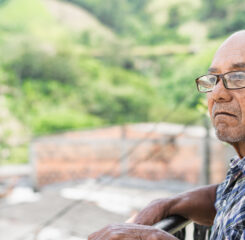Immigration Policy in Build Back Better Act
At least $100 billion of the Build Back Better Act, reported by the House Committee on the Budget on October 28, 2021, would help restore immigration related issues, including proposals that:
- Provide temporary protections and a work permit to undocumented immigrants;
- Expedite a pathway to green cards, through a visa recapture program;
- Allocate funds to the USCIS to alleviate the green cards application backlog and the temporary work protections work permits.
The Build Back Better Act framework could ultimately be a reprieve for at least 7 million undocumented people who have lived in the United States to obtain legal status. Depending on how the program is implemented, more than 2.2 million visas could be “recaptured,” to reduce backlogs and wait times. The funding could also potentially assist the U.S. Customs and Immigration Service (USCIS) with processing the backlogs of green cards that could create a pathway to citizenship for much needed health care professionals to work in aging services.
As Congress closes in on a final Build Back Better bill, the immigration provisions remain in flux. The provisions must survive a review to determine they comply with the “Byrd rule,” which (very generally) prohibits non-spending and non-savings provisions from being included in a reconciliation package. Because the Build Back Better is moving through Congress as a reconciliation bill, each of its many components must comply with the Byrd rule. While immigration provisions may get through a House vote on the Build Back Better Act, they will face increased scrutiny in the Senate and, thus, potentially be removed or changed in that chamber before the bill’s final passage.
LeadingAge Immigration Policy
LeadingAge has been advocating for immigration reform to make it easier for trained, qualified individuals to come to the United States from other countries, as part of a comprehensive approach to addressing the aging services workforce crisis. We continue to share the International Migration of Aging and Geriatric Workers in Response to the Needs of Elders, IMAGINE Initiative, with members of Congress that have jurisdiction over immigration reform and workforce issues.
We are also currently supporting two immigration legislative bills. One bill would help create a new visa opportunity for non-agricultural foreign-born workers to enter the U.S. through a temporary visa classification (H.R. 4288). The second bills (S. 747, H.R. 1909), would establish a mechanism for essential workers, declared during COVID-19 public health emergency, to apply for and obtain permanent resident status.
LeadingAge also sent a letter on August 30, 2021, to the Department of State, co-signed by 10 organizations representing our nation’s long term and post-acute providers, requesting Secretary of State Antony Blinken, prioritize the entry of foreign-trained nurses and health care workers into the United States, to allow us to continue to provide quality care for our patients and residents.
Build Back Better Immigration Provisions
Temporary Protections and a Work Permit. The Build Back Better Act framework would provide temporary protections and a work permit to as many as 7 million undocumented immigrants. Individuals who have lived and worked in the United States for more than 11 years would be eligible to submit an application for adjustment to lawful permanent status. They would also have to agree to pay the required supplemental fees.
Allowing Access to Unused Visas. The United States imposes caps by country on the number of green cards issued each year, which means applicants from countries, where many people apply to work in the United States, end up waiting years for approval. The Build Back Better Act framework would amend the Immigration and Nationality Act (INA) to recapture family-sponsored and employment-based visas already approved by Congress, that went unused during fiscal years 1992 through 2021.
The framework does not raise the ceiling for green cards or grant legal status to a new population of immigrants. The provisions also allow certain individuals who were selected to apply for visas in fiscal years 2017, 2018, 2019, 2020 or 2021, but who were refused a visa or denied admission to the United States because of specific executive orders, or who were unable to complete the visa or admissions process because of COVID-19 related restrictions, to reapply for these visas.
USCIS Case Processing Backlogs. The Build Back Better Act framework appropriates $2.8 billion to the U.S. Citizenship and Immigration Services (USCIS) in fiscal year 2022. The funds would increase the USCIS’ capacity to efficiently adjudicate permanent status and recapture of unused immigrant visa applications and to reduce case processing backlogs.
The Senate parliamentarian has previously ruled against the immigration provisions in the Build Back Better reconciliation bill, stating only provisions that directly impact government revenue can be included in such bills. The parliamentarian ruled that two other immigration plans did not pass the test. House Democrats have indicated the new proposals should satisfy the parliamentarian because they are modest tweaks of the law and they are not granting legal status to a new population of immigrants or seeking to raise the ceiling for green cards.
LeadingAge will work to support these provisions and continue to advocate for immigration reform as part of a comprehensive approach to addressing the aging services workforce crisis.

Most Recommended
October 15, 2025
 Shutdown Week Three: Impact of Ongoing Closure on Affordable Housing
Shutdown Week Three: Impact of Ongoing Closure on Affordable Housing
December 10, 2025
Fiscal Year (FY) Funding 2026
October 07, 2025
Immigrant Workforce Matching Program Brings Workforce Relief
Recently Added
December 12, 2025
 Rural Health Transformation Program: What’s in it for Aging Services?
Rural Health Transformation Program: What’s in it for Aging Services?
December 12, 2025
Top Level HR Execs Received 4.67% Salary Increase in 2025
December 12, 2025
Trump Administration Axes ‘Disparate Impact’ Civil Rights Protections
December 11, 2025



